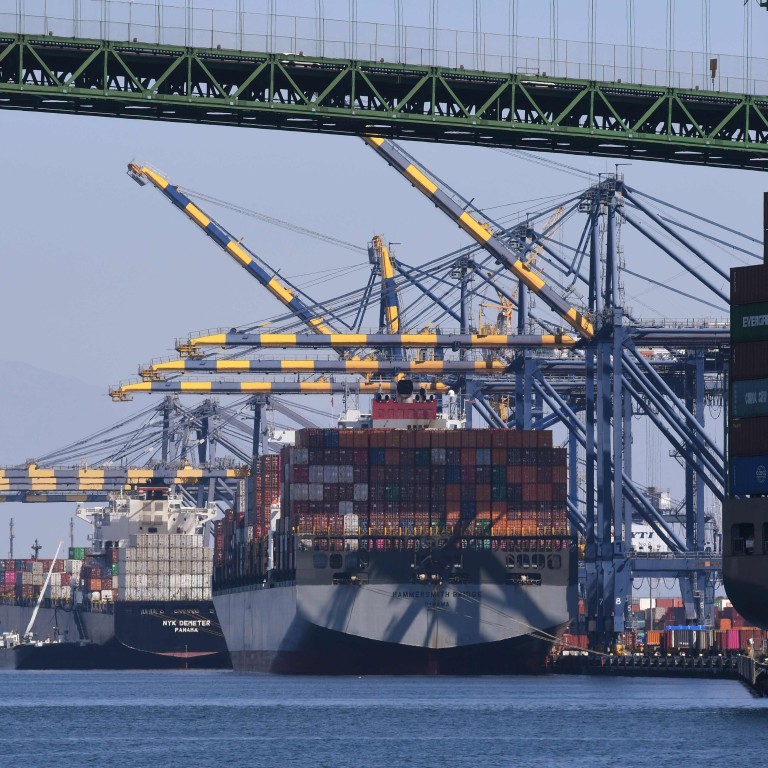
US exports to China plunged in January as trade war chill took effect
- China imports from US plunged 41.1 per cent in January from a year earlier, Beijing says
- Overall exports rose significantly but analysts put this down to seasonal factors
Trade flows between China and the United States are shrinking quickly as officials scramble for a deal that would end the trade war.
Chinese imports of US products plunged 41.1 per cent from a year earlier to US$9.2 billion last month, the lowest since February 2016, according to data released by the Chinese General Administration of Customs on Thursday.
The fall in US exports to China contrasted sharply with the China’s overall imports last month, which remained largely steady with only a 1.5 per cent fall year-on-year.
According to Chinese customs data, China’s imports from the US has now fallen for eight consecutive months, month-on-month, the longest period of continuous decline since monthly bilateral trade data was first made available in 1999.
In January alone, China’s imports from the US were smaller than its imports from Australia, South Korea, Taiwan or Germany.
One of the few US products China is buying more of is soybeans. The data shows that soybean imports increased 29 per cent from December, after China agreed to make more purchases during trade negotiations.
“China has increasingly turned back towards US soybeans since the first trade talks took place at the G20 summit in late November. Just over the last week, almost 480 kilotons of US soybeans inspected for export were destined for China,” said Warren Patterson, head of commodities strategy at ING.
Going the other way, Chinese exports to the US fell slightly, down 2.4 per cent to US$36.5 billion in January.
In comparison, Chinese exports to the European Union jumped 15.3 per cent in January from a year earlier, while exports to Asean improved by 12.5 per cent if measured in US dollar terms.
China’s overall exports expanded by 9.1 per cent, however analysts have warned that this should not be taken as a barometer of the health of the country’s trade economy and was largely due to seasonal factors.
“Nobody was looking at the seasonality of that data until we got the 9.1 per cent growth, at which point we realised it was a long January compared to last year,” said Alicia Garcia-Herrero, chief economist for Asia-Pacific at Natixis.
The future of bilateral trade between China and the US is largely dependent on the outcome of trade talks ongoing in Beijing this week.
The US has threatened to increase tariffs on US$200 billion worth of Chinese products to 25 per cent from 10 per cent if the two sides fail to reach a deal by March 1.
However, US President Donald Trump said earlier this week that he could let the deadline “slide” if a deal appears to be close, while Bloomberg reported on Thursday that Trump is considering extending the deadline by another 60 days.
Chinese President Xi Jinping is expected to meet a top US delegation, including US trade representative Robert Lighthizer and US Treasury Secretary Steven Mnuchin, in Beijing on Friday, sources told the South China Morning Post earlier this week.
Louis Kuijs, the chief Asian economist at Oxford Economics in Hong Kong, wrote in a note that further tariff hikes will be suspended between China and the US in light of “positive signals” regarding the US-China trade negotiations.
While a trade pact will not dispel “underlying tensions about technology and China’s industrial policy”, an agreement and prolonged tariff suspension would “imply an upside risk to growth of China’s exports and economy more generally,” Kuijs wrote.


